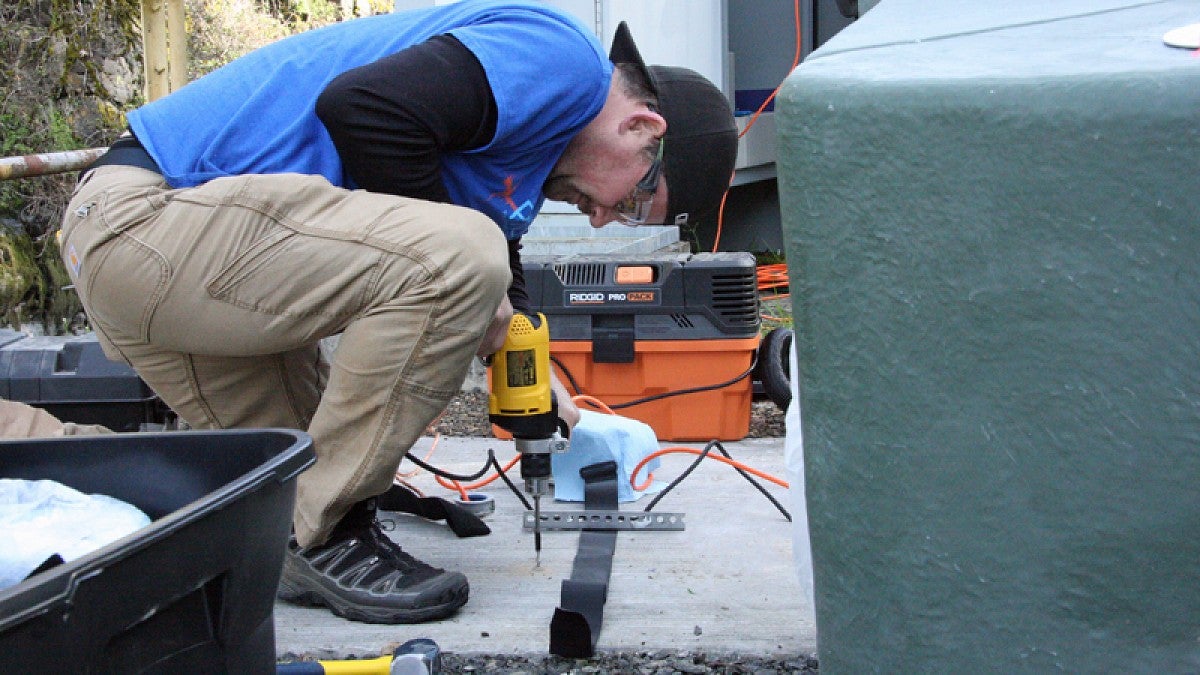The West Coast earthquake early warning system, ShakeAlert, is closer to full reality thanks to expanding seismic monitoring in Oregon and buy-in from the Eugene Water and Electric Board as the state's first end user of the technology.
ShakeAlert, while still a developing prototype, now can provide early warning from Southern California to northern Washington. A gradual rollout of public access is expected to begin next year, pending fine-tuning of data analysis capabilities, officials for the UO, U.S. Geological Survey and University of Washington announced in separate events.
"By launching ShakeAlert in the Pacific Northwest, we've achieved an important milestone, which is implementing a fully integrated West Coast prototype for earthquake early warning," said UO geophysicist Doug Toomey. "In the event of an earthquake, the ShakeAlert system can provide seconds to minutes of warning before strong shaking arrives."
Toomey leads Oregon's role in the Pacific Northwest Seismic Network, a long-running collaboration with the University of Washington.
In the Pacific Northwest, the primary focus of ShakeAlert is the Cascadia fault, located mostly just off shore and stretching from Northern California to British Columbia. The full ShakeAlert system, led by the U.S. Geological Survey, involves the UO, California Institute of Technology, University of California, Berkeley, and University of Washington.
Oregon Gov. Kate Brown praised the integration, calling ShakeAlert "a model of collaboration and partnership" that has West Coast states working to protect the region.
"Operationally, this integration is a very big deal," said Leland O'Driscoll, the UO's seismic network manager and Oregon regional manager for ShakeAlert, prior to a news conference at EWEB's downtown headquarters. "The entire range of ShakeAlert is not at optimum density in terms of monitoring stations, but there are enough sensors out there to give it function."
EWEB put its stake in the network during a White House summit last year and solidified its commitment with the installation last month of a ground-motion detector near its Leaburg Dam facility.
EWEB also will install sensors at its Carmen-Smith Hydroelectric Project on the upper McKenzie River, said Mike McCann, electric generation operations manager. Having access to ShakeAlert, he said, will allow EWEB to activate automated systems to shut down power generation equipment and drain power canals to reduce potential damage in an earthquake.
“Emergency preparedness for an earthquake or other disaster is a shared responsibility, and we want to do our part to help alert the residents of this community," said Mark Zinniker, generation engineering supervisor for the state's largest public utility.
ShakeAlert is now at 40 percent capacity, Toomey said. There are 700 sensors along the West Coast, with 230 in Oregon and Washington. Eventually, the goal is to have 560 in the Pacific Northwest and 1,670 along the entire coast. As the network grows, Toomey said, communication networks that send the data to processing centers are being improved.
The system — now accessible only by end users such as EWEB and scientists — can capture ground shaking, allowing for the detection of an initial, nondestructive seismic wave. Detection of a rupture of Cascadia at its southern end, as is the predicted point of origin for a massive earthquake, would allow up to 2 minutes warning to the Eugene area, 3 minutes for Portland and 5 minutes for Seattle before the subsequent damaging seismic wave arrives.
"One of the gravest threats that Oregon faces is a Cascadia subduction zone earthquake," Brown said. "It could happen tomorrow or 500 years from now. It really makes planning for the big one a challenge, to say the least, but I believe that we can start by focusing on readiness, resilience, response and recovery."
Oregon has reached this stage in the project, she said, because of federal support promoted by U.S. Sen. Ron Wyden and U.S. Rep. Peter DeFazio, both Democrats whose offices were represented at the news conference. She also noted the financial support of the Gordon and Betty Moore Foundation in helping expand the network.
Before ShakeAlert is made widely available to the public, O'Driscoll said, scientists need to sort out various inputs that activate a sensor. "We've seen instrument hiccups that look like earthquakes but have nothing to do with seismic events."
With the expansion of ShakeAlert capabilities in Oregon and Washington, he added, data compiled in the Pacific Northwest also will benefit the Advanced National Seismic System.
—By Jim Barlow, University Communications


